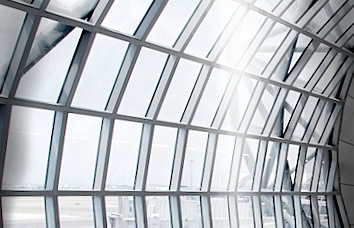 Products
Our Production
Road and building equipment
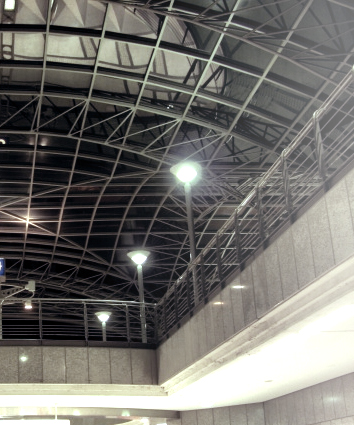
|
gunned
Kalinichenko, Nikolay Gunned Introduction Shotcrete as a method of placing fine-grained concrete appeared in 1907, when Arthur taxidermist Eykli invented the cement gun for the manufacture of stuffed animals, prehistoric life-size for the National Park of New York. Originally gunned invented and used as a structural technique that is as a way of concrete building structures, particularly thin concrete shells. This method and device for its implementation under the name of the cement-gun was patented by its author in 1911, and in 1913 applied to strengthen the walls of the trenches in Saint Petersburg Artillery School. And in the future as a constructive technology gunned in Russia used only under the earth: for the strengthening and lining (lining) of the walls of wells, sinking shafts, tunnels, etc. In building construction it is used only as an auxiliary technique for the repair of concrete structures and fire waterproofing reservoirs, sewage treatment plants, swimming pools. How constructive technology gunned used very rarely and only for the erection of structures pavilion type: petrol stations, bus stops, sheds, and small architectural forms. For example, in 1976 in the town of Tuapse Loo at a gas station building is constructed of sprayed concrete, which has been used successfully so far. At the same time in Solnechnogorsk outside Moscow on an inflatable mold was built Hangar 12 and a width of 36 meters in length, which also still stands today. After that, similar to the hangar hangars were built throughout the Soviet Union, so Angren in Kazakhstan was established plant inflatable formwork. The first construction of sprayed concrete, which has built with his own hands the writer of these lines in 1987, was a pool for the Government of the USSR, the Lenin Hills in Moscow. This pool is also working so far. Therefore, the view that only a well-gunned for the manufacture of small architectural forms, is not true. All the more so abroad, including in the U.S. and in Europe it is widespread in the industrial and civil construction for the erection of various buildings and structures. Limited use in Russia is gunning for several reasons, chief among them - ignorance. Concrete The main building material today is concrete. Experts will notice that the concrete without iron - this is money down the drain, but the main material in reinforced concrete - concrete. As such, concrete consists of two parts: from the binder and filler. If the binder - the bitumen and aggregate - sand, then we - blacktop. If the binder - cement and aggregate - crushed stone, then we have - just concrete. And if we binder - cement and aggregate - sand, then this mixture is called a solution. From asphalt are asphalt, concrete - concrete and reinforced concrete structures, and from the solution - the plaster. Asphalt concrete for construction of building structures are not used because of low yield strength and binder, ie, asphalt (or resin), and the solution is not usually used for construction of building structures due to the inability to seal it properly because of the sand. But unlike the bitumen, which is nothing you can do except to split into components, the sand is still undervalued, and therefore not used in the construction quality. But before you go to them, dwell on the shortcomings of sand as a filler. The main disadvantage of sand - thats what it is shallow. Each grain of sand, however small it may be, has a surface area. And when a grain of sand in the solution, its surface must be lubricated with cement, otherwise it will not stick together with the neighboring grains of sand and plaster osypletsya. But the smaller grains in the solution, the greater the total surface area per unit volume, and the greater the need binders such as cement, this unit volume. Conversely, the larger the particle aggregates in solution, the smaller the total surface area and the less need binders to connect them. In this application, and is based in the rubble as concrete aggregate. Any other advantages over sand gravel is not. But he has a couple of significant drawbacks, which until recently has been neglected. Our values - a continuation of our weaknesses and vice versa. The same is true with respect to the gravel. Its particles are large, so the specific surface area per unit volume it is small. But by themselves, these particles are quite noticeable. Moreover, they just stand out in the concrete. And as the coefficient of thermal expansion, they always different from the thermal expansion coefficient of cement glue, then sooner or later these larger particles simply tear and destroy the cement concrete. This destruction does not happen for a long time only in cases where concrete or concrete structure is not exposed to significant temperature gradient. For example, when it is inside the heated space. The second major drawback - it is the artificiality of rubble. As such, the rubble - it does not make up a natural resource. It is produced by crushing natural stone. But natural stone - is picturesque rocks, which are not everywhere, and those that are, by no means always want to destroy. For example, in France they have no wish to destroy. And in the same French have found a way out of this seemingly hopeless situation. The French builders turned their attention to the sand. In contrast to the gravel sand produced by nature itself, so it is - of renewable resource, and its production does not lead to significant destruction of the natural landscape. In addition, as in concrete, it is not destroying it as rubble. However, at the cost overruns of cement. But it has to pay for everything. A variance of cement - not only the lack of fine-grained concrete, as concrete is referred to as the builders of sand and cement. His second drawback - compactibility is bad. Most of the total surface of the sand creates a large internal friction between them. Grains, as it were clinging to each other and do not let them pack more tightly. Reducing the friction between them due to cement and water, as well as special additives that increase the fluidity and plasticity of the concrete - not the best and cheapest way to solve this problem. Cheaper and more effective are special ways of sealing peskobetona. For example, a stroke, which are shock-concrete, and pressing, but they are not applicable always and everywhere. And, apparently, is not, and may not be the general solution of these problems. Therefore, each of them so far and is solved in its own way and in its place. Nevertheless, the general solution exists. And this solution - gunned. Technology Today, there are two ways to shotcrete - dry and wet. The first was invented by a dry method. With this method, a dry mixture of sand and cement with the help of compressed air is fed in plaster sleeves to the point of application. At the outlet of the hose is installed special metal nozzle, in which additional water is pumped. In the nozzle, a dry mixture of sand and cement mixed with water and departs from it in a flame at a rate of 70 to 120 meters per second. Bumping into an obstacle, already wet mixture sticks to it and compacted. In the wet process of the plaster hoses with compressed air is supplied ready to cement or wet mixture of cement and sand. It also passes through the nozzle and fakeloobrazuyuschee at the same rate from 70 to 120 meters per second is applied to the base. Dry process shotcrete was first invented, and therefore was more widespread and better known. However, it has one significant drawback, which leads to several negative consequences. This defect - dry cement-sand mixture. First, in terms of its construction is not always possible to achieve and keep. Because of this, in wet weather and high humidity, dry shotcrete method is not applicable. Second, the dry mixture in the nozzle does not have time to fully moistened. On the one hand, this leads to losses in the spray mixture and the rebound from 10 to 50%, while the other - for rapid dusting the workplace hazardous to the health of dry dust down to a complete loss of sight. And Last, but not least: the need to constantly monitor not only for styling, but the humidity caused by the solution, which varies from moisture and air and moisture from the dry mixture, and which must take into account the water supply to the nozzle, increasing the load on soplovschika and requirements for its preparation. Wet shotcrete is deprived of all these features due to the fact that the composition and quality of sprayed concrete is not specified prior to application on the grounds soplovschikom, and early in the preparation of a wet mixture of other workers. In this method soplovschik monitors only for laying shotcrete. Visibility in the workplace is significantly higher, and hazardous work are significantly lower because of the torch stands out not dry dust, and fog, easily retained the usual gauze mask and settling more quickly than dry dust. In the rebound goes only large particles of sand without cement. And the loss of up to rebound from 5 to 10%. Apply shotcrete layers layers with a thickness of several millimeters to several centimeters. Layer thickness depends on what is created. When you create a waterproof jacket thickness of the applied layers usually do not exceed 5 millimeters, and in the construction of retaining walls thickness of one layer can be 50 - 60 and even 100 mm. However, the application of modern accelerators, curing of concrete thickness of the deposited layer at a time is unlimited, even when applied to the concrete ceiling. Layering shotcrete due not only to the fact that without hardening accelerator at once difficult and sometimes impossible to deliver the required thickness of concrete. If applying in layers more than qualitatively solve the main task of shotcrete - concrete seal fine. Cement is not one of the four natural materials, which expand during solidification. These materials are: water, iron, gypsum and sulfur. Hardening cement reduced in volume, or as they say the builders shrink. Just so the concrete is prepared on the cement, the solidification cracking. To give some order is cracking and crumbling concrete to prevent its increase with steel rods, called by the Italians reinforcement, ie, just gain. Reinforced, ie reinforced with iron, or rather, steel rods and concrete is concrete. Unfortunately, the fittings - not the cheapest solution to crack the concrete. And besides, and not perfect. Cracks formed anyhow. Yes, and accessories not only enhances the concrete, but also to prevent its compaction. With each successive layer of shotcrete shotcrete is applied after being cured, and, as it is conducted, cracked the previous one. When applying the next layer is formed in the previous layer cracks become clogged with fresh solution. The new layer is the same crack in other places, so that two adjacent layers of the crack, as a rule, do not match. But even if they match, the next layer of fresh mortar to fill these cracks. With this has three layers of sprayed concrete enough to get water and airtight concrete shirt. Or shell. Equipment To work with the dry cement-sand mixtures was invented by Arthur Eykli cement-gun. So it is called in Russia. In fact was not invented gun, shooting cement and Nagan revolver. And the American name for it fits the cement-gun. Like the revolver, the cement-gana ground - it is rotating around a vertical axis of the charging roller. It consists of six hollow cylinders, the lower ends of which glide on a flat substrate, the closing cylinder bottom. On top of the cylinders are open, and they filled in the rotation of the drum dry mixture from the hopper mounted above the drum. When the drum rotates, each of the cylinders in turn is part of the gap plaster hoses coming from the compressor to the nozzle. In this dry mixture in the cylinder, blown out with compressed air from the compressor, sprayed and sent to the nozzle, which is moistened and thrown to the right place. When preparing a dry mixture in-built conditions are usually applied mortar gravitational action. For the calcination of sand used heated steel brazier. For the water supply to the nozzle using a hermetically closed tanks, in which by means of compressed air from the compressor creates the required pressure. The installation of shotcrete, working on the final (or wet) mixture, developed N.S.Marchukov Soviet engineer. At the core of this installation - diaphragm mortar production Ryazan plant construction machinery "LLC «Stroitelnye mashiny»» , designed for pumping of plaster. N.S.Marchukov developed attachment to this pump, turning it into a spray bottle, ie, Spray for a solution. The device allows him to an ordinary mortar pump only light and liquid plaster solutions. But the need for a heavy rigid shotcrete solutions with a slump of 5 - 8 inches. These solutions are regular pumps to pump is not able to. To make conventional pumps suitable for pumping heavy and hard solutions, Marchukov replace valve box on your console. It consists of a shaker, under which is a cone-shaped tank solution. Hopper mounted on the working chamber, which is a rubber diaphragm connected to a pump working chamber. On the opposite side of the pump working chamber is connected to the console Marchukova mixing chamber to which a hose from the compressor in which the spray solution in a jet of compressed air. From the mixing chamber plaster arm moves up to 70 meters. It is at such a distance from the largest installed horizontally and can torkretirovat. The vertical distance from the highest setting - 30 meters. In addition to the pump with the prefix of the installation Marchukova shotcrete mortar is also compulsory. It is installed on a particular frame in such a way that the solution is paged out of it goes directly to the shaker. In addition to this very simple installation for guniting N.S.Marchukov based plastering the station has developed a unit for feeding heavy rigid solutions UPTZHR - 2,5 . This setting is a small car, which is installed inside the diaphragm Marchukova mortar with a prefix, but without mortar. Instead, the rear of the trailer is a hopper in which the rotating mixing and feeding the wheel with blades for mixing and scoop to feed solution on the shaker. This plant can be operated with ready-made (trade) concrete mixtures, delivered centrally, and with the cooked directly in it. Work with the installation easier and more convenient, but it requires moving the crane and on-board vehicle load capacity not less than 5 tons. The simplest setup is disassembled and loaded on a "Gazelle" by hand. Comparison of equipment for both methods of shotcrete shows that neither the value nor the complexity of much of a difference here. The difference, though significant, noticeable throughout the work. This has already been mentioned above. However, both methods are still gunning in force. However, in some countries of Western Europe more widely used dry process shotcrete. It is connected with the tradition and the lack of good equipment for wet shotcrete. In Russia, as already mentioned, the wet method is virtually unknown in spite of the fact that we have - the best equipment in the world of its own production, it is - CO-gunning installation 50PBN . Shaping Due to the fact that the main weapon for laying concrete in shotcrete - the air and the air has no shape, form-building capabilities of this method of construction seem to be unlimited. But there are limitations. And they are determined not only by the will and ability of the architect, but also the already mentioned features of the shotcrete, and shotcrete properties and natural laws. Thanks to the layered deposition of sprayed concrete is possible to build a thin-walled structures. But quite strong and stable only some thin-walled structures - called membranes. And due to the fact that the sprayed concrete - is primarily concrete and concrete works much better compression than in tension, in these constructions, it is used well. Thus, in the buildings of the sprayed concrete primary structural system - no post-and-girder, as in all others, and even vaulted or arched, in particular, and the shell. At first glance it might seem that such a structural system is suitable only for a limited number of buildings and structures. Mainly for the pavilions, halls, hangars, warehouses, tunnels, mines, tanks, etc. However, the study of experience in the design and construction, as well as research and development conducted by the author, show that the area of application of thin-walled shell structures of the shotcrete has no natural limits. But there are artificial. And above all this ignorance and lack of education as the designers and contractors, and customers with the consumers. Shell - a special design. The initial shape of the shell - the surface of the ball. In turn, the ball - is not only a perfect body, but also original. All other body, and all other forms - is derived from the ball. So Plato called the body, ie cylinder, cone, cube and a torus - a modification of the ball. Sophisticated body - is a combination, the addition of balls and their distortion. Until now, no building, no more so in other sciences are not taken into account the fact that all the observed diversity of forms is divided into two kinds. First, the natural, and secondly - to the artificial. It would seem that what the builder of the natural form, if it only deals with man? However, simple observation suggests that the natural forms - the most suitable. The calculations also show that the closer the artificial to the natural shape, so they are more perfect. The pattern by which combine balls, was seen and identified by the German architect Frei Otto in the suds. At its core it is a so-called superdense packing of spheres. Frei Otto said that in the suds all the angles are 120 degrees connections. And if you joined the same bubbles are formed like a bee honeycomb. But during the docking of different vesicles arise many forms. Thus, the example of suds can be clearly seen that the ball - it is original or primary form, and all others - derived from the ball, and therefore secondary. Mathematicians believe that the original form is the point. As the point formed by the line. When moving the line there is a surface, and when the surface there is volume. In fact, as the point there is no line. And the motion of the line does not arise any surface. In fact, when the point moves, it grows, and eventually turns into a car. Or in person. It all depends on the movement which we observe. And although at first we see the point, and then a car or person, in fact, was at first the car or the man, and then they began to look like a point, because the left. Thus, the point - not the original component of the form, and final, although the observer it seems all of the other way round. In the suds visually represented all levels of education forms and their components of the balls. Various three-dimensional shape formed by the deformation of the bubbles. The surfaces are formed by combination of two bubbles. For the formation of the line is need to connect three bubbles. A need for education as much as four points of the bladder. Thus, the point - it is the hardest part of the form. And the last one. Including why its worth it in the end of the sentence. As for the bubbles, then even though they are artificial, they are combined strictly according to the law of natural development, thus his whole appearance indicating that the arts not only can but should be logical. However, for this we must reconstruct not only the politics and economics, and science, and education. advantages of this method The advantage to large-cast housing is the lack of plant efficiency. For the monolithic housing needs RBU, a set of formwork, Lack of formwork means that the shape of the building does not depend on the formwork. But that does not mean that it must be arbitrary. It should be reasonable. That is, it must be based on natural laws according to the wishes of the customer and the design task. At the heart of the natural formation - the sphere and the torus. Their combination of structures built by the same laws as the honeycomb, as well as bubbles of foam soap is optimal in terms of the relationship of the square enclosing protecting structures, and in terms of carrying capacity and stability, and in terms of material These structural systems. To date, the building is no more perfect, ie stronger, sustainable and cost-effective structural systems. All this allows you to design and construct buildings and structures for various applications in the shortest time, and a variety of sizes and shapes at the lowest cost of materials and labor, and, consequently, money. Concrete works well for compression and bad - in tension, so that from it the most suitable vaulted construction. However, the production of curved formwork for the construction of these labor-intensive and material-intensive. Inflatable formwork is more convenient, but they require a particular manufacturer, so they are expensive, and besides, they have a habit of falling even before they have supported the concrete attains necessary strength. Currently in use, effective and inexpensive concrete hardening accelerators, which allow not particularly afraid of the collapse of the shell. But then in the first place there is another feature of inflatable formwork - its ability to create a shell identical. All of these issues by themselves disappear when bezopalubochnom method construction of monolithic structures. In this method, there are several ways of construction, but the most profitable one in which the shape of concrete structure reinforcement is given, without which this concrete does not happen. Method of specifying shape fitting - "know-how" of the author. Also, "know-how" and a way of designing buildings and structures constructed of reinforced concrete without formwork. consumption of materials The main construction material - fine-grained concrete. Its flow rate - about 0.5 cubic meters per square meter total area of a house. The composition of concrete is coarse sand with a fineness modulus of 1.5 - 2.1 and cement grade 400 (500). Consumption of cement - no less than 600 kilograms per cubic meter of concrete. Reinforcement is reinforcement carrier-class-I of 10 mm diameter, and fitting the distribution of class-IV BP 5 mm in diameter. Flow valves - 60 - 100 kilograms per cubic meter of concrete. Insulation - expanded polystyrene or polyurethane foam. There are also other effective insulation. The thickness of the insulation - for money. For Moscow, the thickness of the polystyrene is 120 mm. The thickness of the foam - about 50 mm. The smaller the thickness of the insulation, the more elegant design. Load-bearing partitions and walls made of concrete, others - from any other material. The outer surface may wipe, get off a coat, a ragged stone, undoing, and other types of plastic materials as conventional plastered surface, as well as veneered and painted with exterior paint. The interior surfaces can also be faced with tiles, stone, wood and painted with paints for interior work. construction equipment Application equipment includes a fine concrete gunite installation CO 50PBN or UPTZHR-1 (setting the reception and transportation of hard solutions) produced Ryazan plant construction machinery" LLC «Stroitelnye mashiny» ». The equipment complement the plaster sleeve with an inner diameter of 50 mm and a length of 70 m, required compulsory mixer with a capacity 150 - 250 liters, and a compressor capacity of 5 - 10 cu. meters of air per minute. More information about the equipment, see shotcrete. Zalinkuy phrase in the section according th < br /> To apply reinforcement work and manual guillotine shears for cutting rebar, rebar bending machines, including machines for bending reinforcement for large radii (the invention of the author), welding machine for welding fixtures. 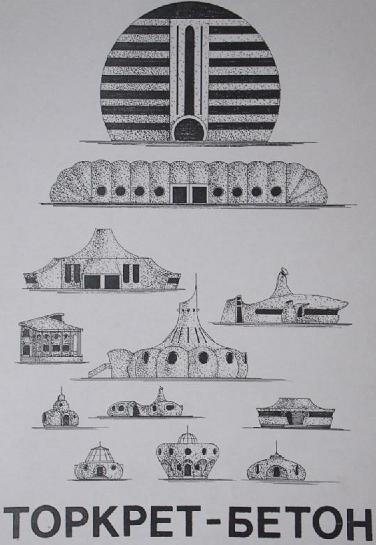 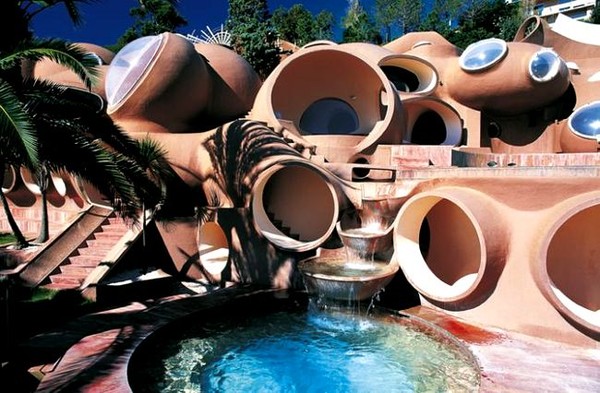 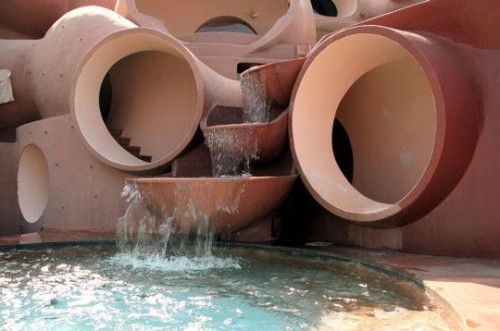 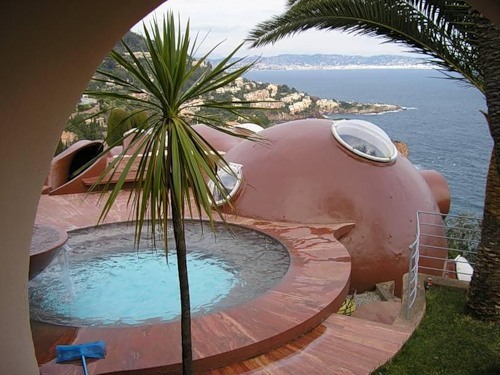 |













